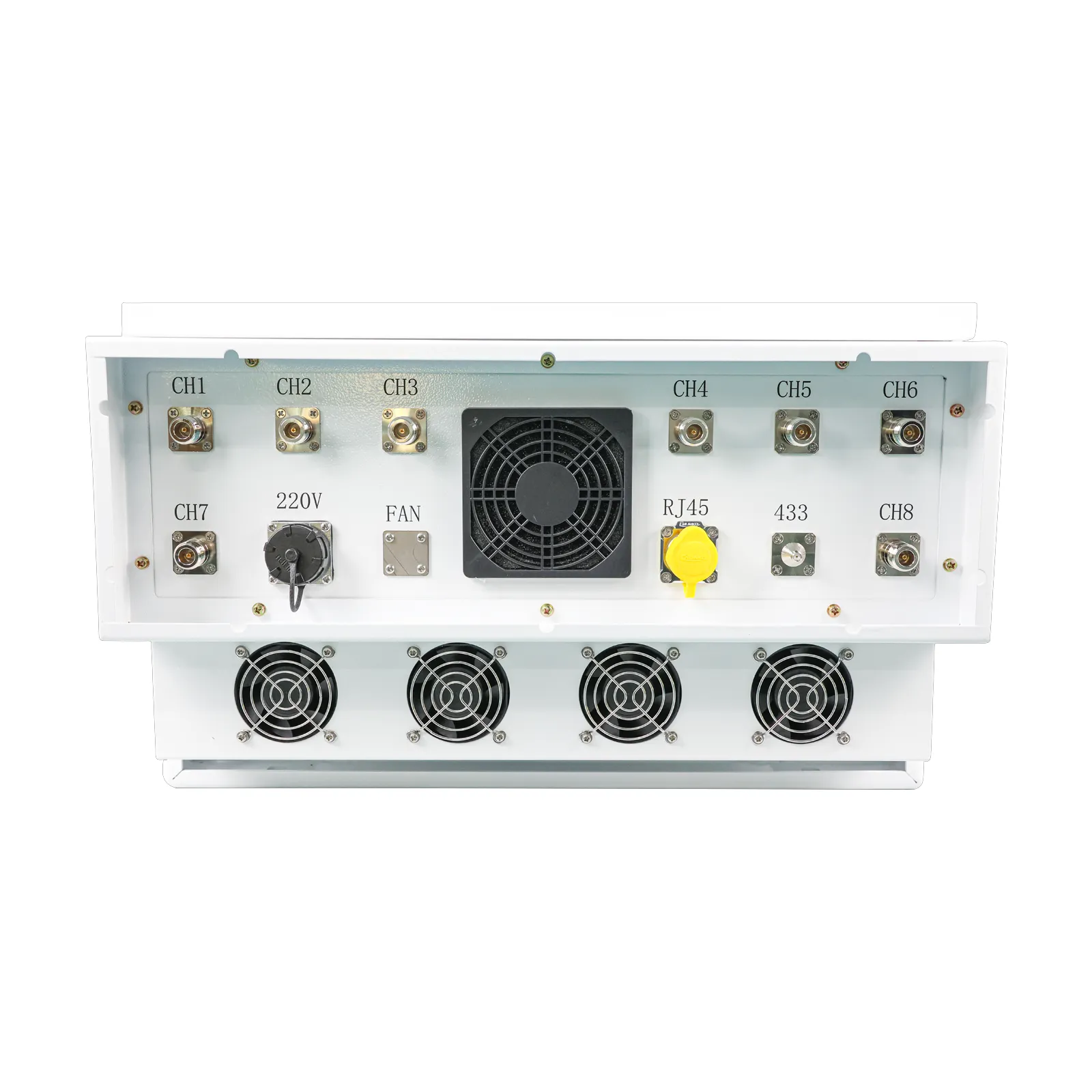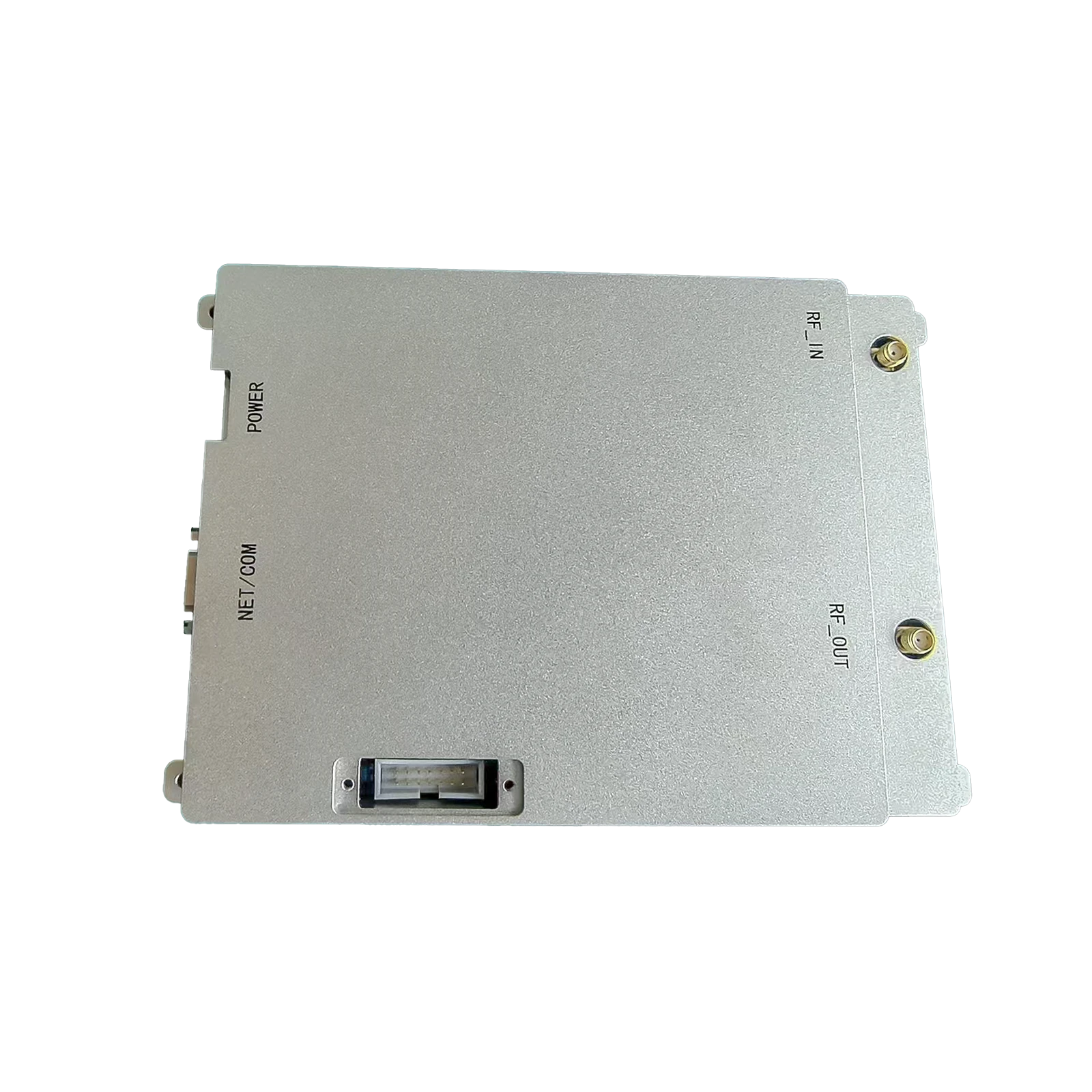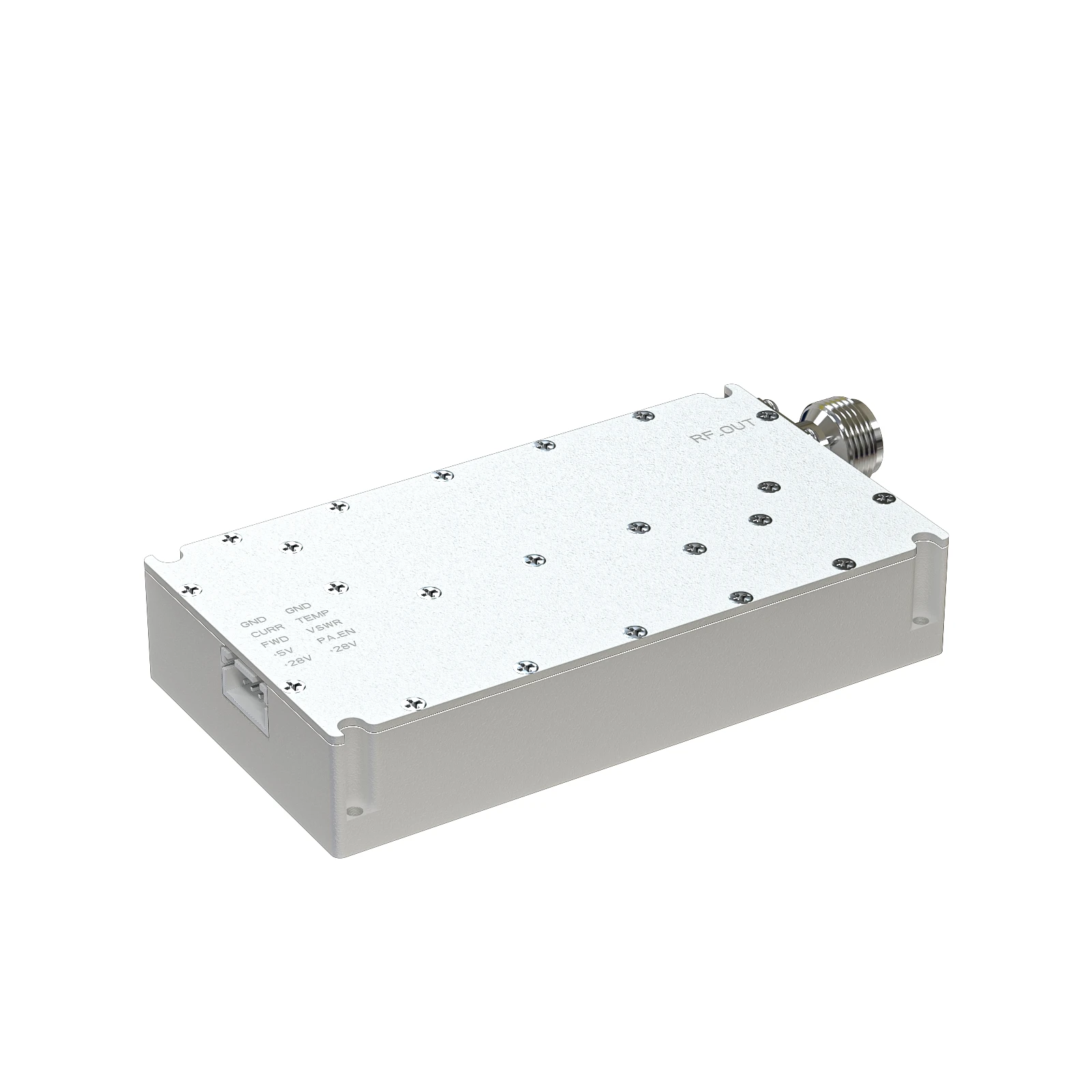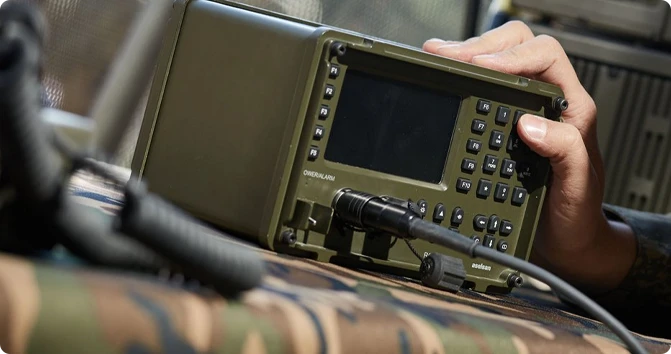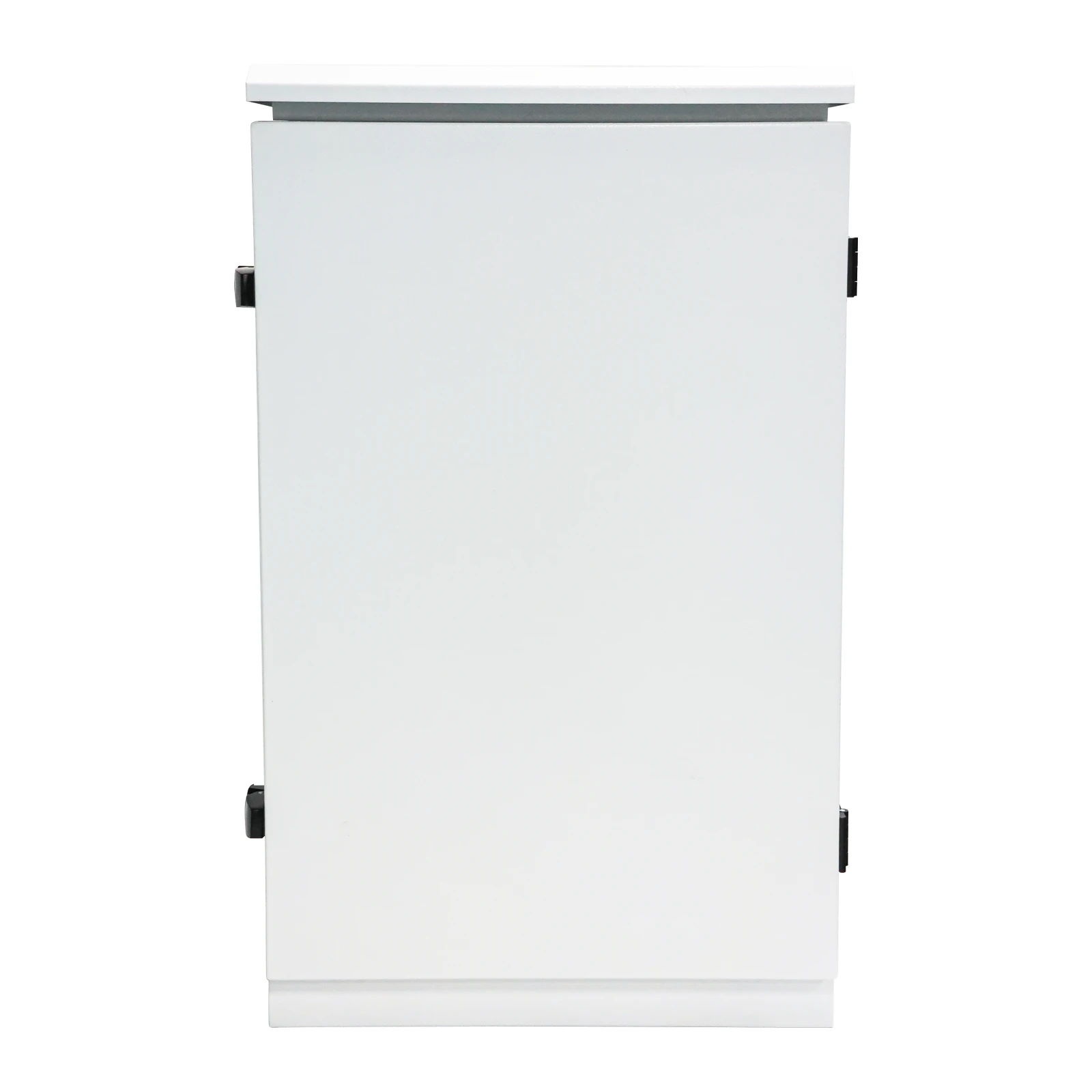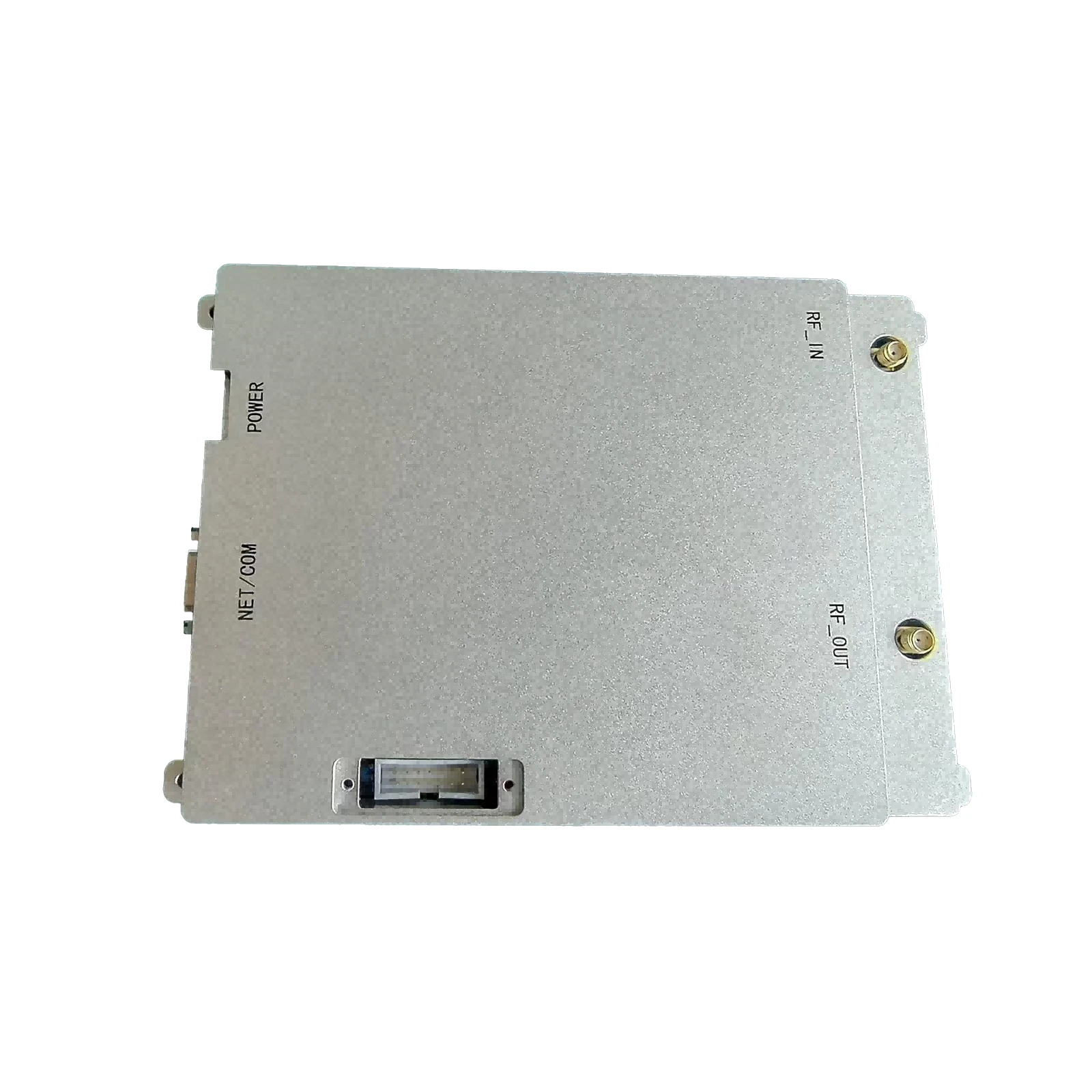Portable Handheld Drone Detector | Spot Threats Fast
In an era defined by rapid technological advancement, the proliferation of unmanned aerial systems (UAS), commonly known as drones, presents both unprecedented opportunities and significant security challenges. From critical infrastructure protection to public event safety and border security, the need for effective counter-UAS (C-UAS) solutions is paramount. Among these, the handheld drone detector has emerged as an indispensable tool, offering unparalleled portability, rapid deployment capabilities, and immediate threat assessment for security professionals. This comprehensive overview delves into the technical intricacies, application benefits, and strategic importance of these advanced detection systems.
Industry Trends and the Evolving Threat Landscape
The global market for C-UAS technology is experiencing robust growth, driven by an escalating number of unauthorized drone incursions. Reports from various national security agencies consistently highlight incidents ranging from industrial espionage and contraband delivery to direct threats against critical infrastructure and public safety. For instance, the Federal Aviation Administration (FAA) recorded over 2,000 drone sightings near U.S. airports in 2022 alone, underscoring the urgent need for reliable detection mechanisms. The market is projected to reach over $3.5 billion by 2028, with a significant segment dedicated to portable and deployable solutions.
Key trends influencing the development of the handheld drone detector sector include:
- Miniaturization and Portability: A growing demand for compact, lightweight devices that can be easily carried and operated by field personnel.
- Multi-Spectrum Detection: The need to detect a broader range of drone communication protocols, including advanced digital, encrypted, and frequency-hopping spread spectrum (FHSS) signals, alongside traditional analog video feeds.
- Enhanced Direction-Finding Capabilities: More precise localization of drone origins to facilitate interdiction.
- AI and Machine Learning Integration: Leveraging algorithms for faster, more accurate threat classification and reduced false positives.
- Integration with Broader Security Frameworks: Seamless data sharing with command-and-control (C2) systems and other security assets.
These trends collectively push the boundaries of what a drone detector handheld unit can achieve, making it a pivotal asset in modern security operations.
Technical Specifications and Product Overview
The Handheld Drone Detector is engineered to provide comprehensive and reliable detection of a wide array of UAS threats. Its core capability lies in its expansive frequency detection range and advanced signal processing.
Key Features and Capabilities:
- Broadband RF Detection: Capable of detecting signals across a critical spectrum of 440MHz to 6.19GHz. This range encompasses most commercial, consumer, and even custom-built drone communication links, including Wi-Fi (2.4GHz, 5.8GHz), DJI's proprietary OcuSync and Lightbridge protocols, various FPV (First-Person View) analog video transmissions, and other control signals.
- Analog and Digital Transmission Analysis: The detector meticulously analyzes both analog and digital RF footprints. This distinction is crucial as it allows for the identification of older, simpler drones relying on analog video signals, as well as sophisticated modern drones employing complex digital data streams and encryption.
- Real-time Threat Alerts: Provides instant visual, auditory, and haptic (vibration) alerts upon detection, enabling immediate security response.
- Direction Finding (DF): Integrated antenna arrays and signal processing algorithms pinpoint the direction of the detected drone or its operator, facilitating rapid localization and intervention.
- Intuitive Interface: Designed for ease of use in high-stress operational environments, featuring a clear display and ergonomic controls.
Product Specifications:
| Parameter | Specification |
|---|---|
| Detection Frequency Range | 440 MHz – 6.19 GHz |
| Detection Type | Analog & Digital (e.g., Wi-Fi, OcuSync, Lightbridge, FHSS) |
| Effective Detection Range (LOS) | Up to 1.5 km (environment dependent) |
| Alert Modes | Visual (LCD), Audio (Tone/Voice), Vibration |
| Battery Life | Up to 6 hours continuous operation |
| Weight | Approximately 1.2 kg (2.6 lbs) |
| Dimensions (L x W x H) | ~250 x 100 x 50 mm |
| Operating Temperature | -20°C to +50°C |
| Ingress Protection (IP) Rating | IP65 (Dust tight and protected against water jets) |
| Interface | LCD display, tactile buttons, USB-C for updates |
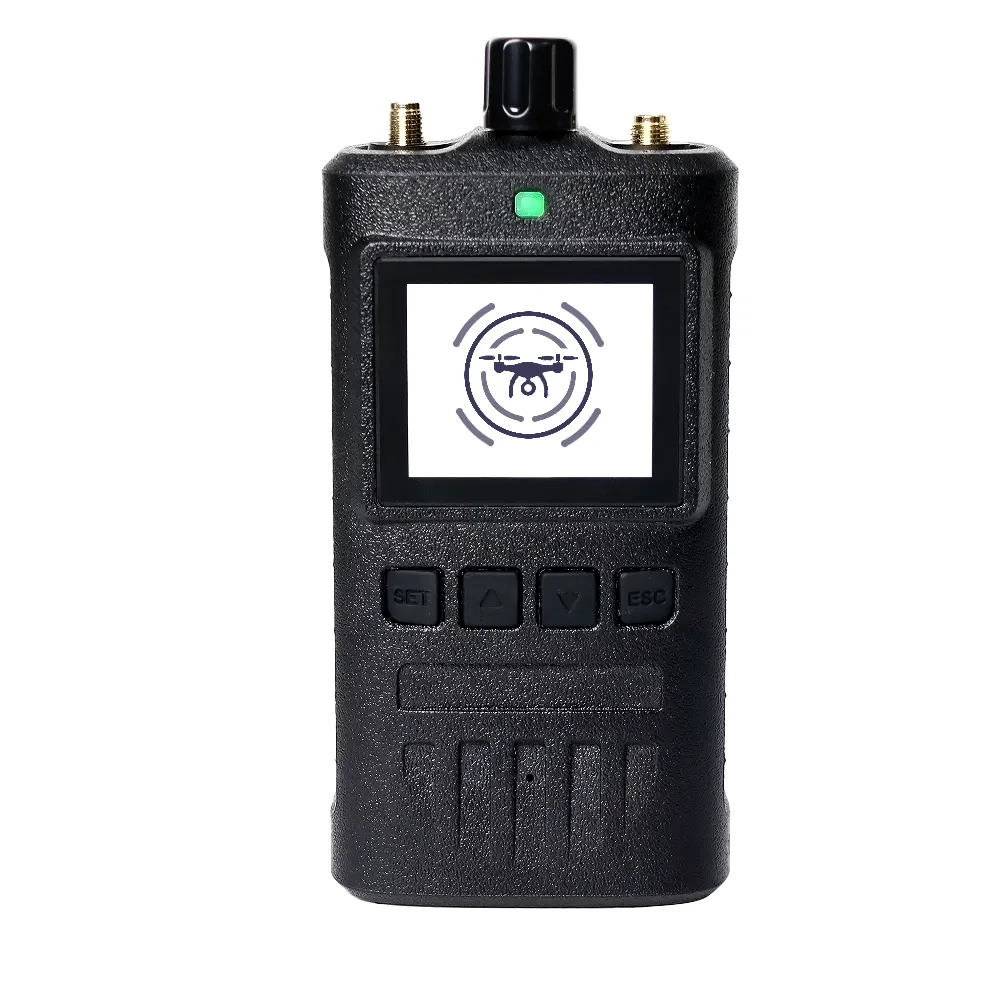
This particular drone detector handheld unit is designed for rapid deployment and ease of use by security personnel, ensuring that operators can quickly identify and react to aerial threats without extensive specialized training.
Manufacturing Process Flow and Quality Assurance
The production of a high-performance handheld drone detector involves a meticulous process, ensuring precision, reliability, and robust performance in demanding environments. Our commitment to quality adheres to stringent international standards, from material selection to final calibration.
1. Component Sourcing and Validation:
- Materials: We utilize aerospace-grade aluminum alloys for critical structural components, ensuring strength and thermal dissipation. The housing employs advanced ABS/polycarbonate composites, selected for their impact resistance, lightweight properties, and RF transparency where required. High-sensitivity RF modules, low-noise amplifiers, and specialized antennas are procured from certified global suppliers.
- Quality Checks: All incoming materials undergo rigorous inspection, including spectral analysis for purity, dimensional verification, and electrical performance testing for active components.
2. Printed Circuit Board (PCB) Fabrication & Assembly:
- Precision Fabrication: Multi-layer PCBs are manufactured with strict impedance control, critical for high-frequency RF signal integrity.
- Automated Assembly: Surface Mount Technology (SMT) lines ensure precise placement of hundreds of miniature components. Reflow soldering processes are tightly controlled to prevent defects. Post-assembly, Automated Optical Inspection (AOI) and X-ray inspection verify solder joint quality.
3. Housing Manufacturing:
- CNC Machining: For metal chassis and specific internal mounts, high-precision CNC machining ensures exact tolerances for component fit and thermal management.
- Injection Molding: Polymer enclosures are produced via advanced injection molding techniques, ensuring ergonomic design, robust environmental sealing (e.g., to achieve IP65 rating), and aesthetic finish.
4. Integrated Assembly and Calibration:
- System Integration: PCBs, displays, battery packs, and custom antenna arrays are meticulously integrated into the housing. Wiring and connectors are secured to withstand vibration and shock.
- RF Calibration: Each unit undergoes a multi-point RF calibration using certified test equipment. This tunes the receiver sensitivity and frequency accuracy across the entire 440MHz-6.19GHz range, ensuring optimal detection performance. Firmware is loaded and configured during this stage.
5. Rigorous Quality Control and Testing:
- Environmental Testing: Units are subjected to extreme temperature (MIL-STD-810G), humidity, and vibration tests to ensure operability in diverse climates and rugged field conditions.
- RF Performance Verification: Comprehensive anechoic chamber testing verifies actual detection range, direction-finding accuracy, and false positive rates against known drone signals.
- Battery Life and Power Management: Extensive cycling tests confirm battery longevity and efficient power consumption.
- Electromagnetic Compatibility (EMC/EMI): Products are tested to meet CE, FCC, and other regional EMC directives, ensuring they do not interfere with other electronic systems and are resistant to external interference.
- Durability Testing: Drop tests and ingress protection (IP) tests confirm physical resilience against dust and water.
Testing Standards and Certifications:
Our manufacturing processes are certified under ISO 9001 for Quality Management Systems, ensuring consistent production quality. Products comply with CE (Conformité Européenne) and FCC (Federal Communications Commission) regulations, as well as RoHS (Restriction of Hazardous Substances) directives.
Service Life and Target Industries:
Designed for durability, the typical service life of our handheld drone detector units is 5-7 years, with proper maintenance and periodic calibration. They are indispensable for sectors such as:
- Homeland Security & Defense
- Law Enforcement Agencies
- Critical Infrastructure (e.g., petrochemical plants, metallurgy facilities, power grids, water treatment plants)
- Public Safety & Event Management
- VIP Protection & Executive Security
These units demonstrate significant advantages in typical application scenarios, including rapid threat identification (energy saving in terms of response time), robust performance in harsh environments (corrosion resistance through material selection), and minimal operational footprint.
Application Scenarios and Technical Advantages
The versatility and technical prowess of the handheld drone detector make it a critical asset across numerous high-stakes operational environments.
Primary Application Scenarios:
- Critical Infrastructure Protection: Safeguarding sensitive sites like nuclear power plants, data centers, oil refineries, and communication hubs from aerial surveillance or potential sabotage. Drones can map vulnerabilities, perform reconnaissance, or even deliver payloads. A drone detector handheld enables security teams to establish dynamic exclusion zones.
- Public Event Security: Ensuring the safety and privacy of attendees at large gatherings such as concerts, sporting events, political rallies, and festivals. Unauthorized drones can pose risks ranging from security breaches to accidental crashes. Rapid detection allows for timely intervention, often before a drone becomes visible to the naked eye.
- Border Surveillance and Law Enforcement: Assisting border patrol agents in detecting drones used for illegal cross-border activities like drug smuggling, human trafficking, or reconnaissance by illicit actors. Law enforcement also deploys these units during sensitive operations or crime scene protection.
- VIP and Dignitary Protection: Creating mobile secure perimeters around high-value individuals, detecting and neutralizing potential aerial threats during transit or at static locations.
- Military and Tactical Operations: Providing ground forces with real-time awareness of small UAS threats, enabling tactical decisions and mitigating risks during combat or reconnaissance missions.
Technical Advantages:
- Unrivaled Portability and Mobility: The primary advantage is its compact, lightweight form factor, allowing operators to move freely and respond to threats across vast or challenging terrains. This contrasts sharply with fixed installations or bulkier mobile C-UAS systems.
- Passive Detection for Covert Operations: Unlike active radar systems that emit signals, RF detection is passive, meaning it does not reveal the operator's position and can be used effectively in covert surveillance or sensitive security roles.
- Broad Spectrum Coverage (440MHz-6.19GHz): This wide frequency range ensures detection of a vast majority of commercial and custom drone types, mitigating the risk of unknown or exotic threats slipping past. The ability to discern between analog and digital signals further enhances its comprehensiveness.
- Rapid Threat Identification and Direction Finding: The system's ability to quickly identify drone communication protocols and provide immediate directional cues dramatically reduces response times, allowing security personnel to track and interdict the drone or operator efficiently.
- High Accuracy with Low False Positives: Advanced signal processing algorithms differentiate between legitimate RF noise and actual drone signatures, minimizing distractions and maximizing operational efficiency. This is a critical factor for preventing 'alert fatigue' among security teams.
- Ease of Integration: While standalone, the data output can often be integrated into existing security command and control platforms, providing a layered defense approach.
- Non-Disruptive Operation: As a detection-only device, it does not interfere with legitimate communications or GPS signals in the vicinity, making it safe for use in populated or communication-sensitive areas.
Vendor Comparison and Customized Solutions
The market for C-UAS solutions is diverse, with various vendors offering systems tailored to different operational requirements. Understanding where a specific handheld drone detector stands in this landscape is crucial for informed decision-making.
Comparative Analysis of Handheld Drone Detectors:
| Feature | Our Handheld Detector | Competitor A (Entry-Level RF Detector) | Competitor B (Advanced Handheld Scanner) |
|---|---|---|---|
| Detection Frequency Range | 440 MHz – 6.19 GHz | 2.4 GHz & 5.8 GHz (Common Bands) | 20 MHz – 6 GHz (Broad but less specific protocol ID) |
| Detection Type | Analog & Digital (Protocol ID) | Primarily Digital (Basic Protocol ID) | General RF Scanner (Less Protocol Specific) |
| Effective Detection Range (LOS) | Up to 1.5 km | Up to 500 meters | Up to 1 km (with advanced antenna) |
| Direction Finding Capability | Integrated DF, High Accuracy | Basic directional indication | Advanced DF, often external antenna required |
| Form Factor / Weight | Compact Handheld / ~1.2 kg | Small Handheld / ~0.8 kg | Larger Handheld / ~2.5 kg |
| Battery Life | Up to 6 hours | Up to 4 hours | Up to 5 hours |
| Key Features | Protocol ID, Multi-Alert, IP65 | Basic RF signal strength, affordability | Spectrum analysis, data logging |
This comparison highlights our product's balance of broad detection capability, robust design, and user-friendly interface, positioning it as a leading choice for professional security operations requiring a versatile drone detector handheld.
Customized Solutions: Tailoring to Unique Operational Needs
Recognizing that every operational environment presents unique challenges, we offer bespoke customization options to ensure our handheld drone detectors seamlessly integrate into specific security frameworks. With over 15 years of expertise in RF security solutions, our engineering team collaborates closely with clients to develop tailored solutions.
- Targeted Frequency Band Optimization: For regions with unique drone communication standards or emerging threat vectors, we can optimize detection algorithms and hardware to focus on specific frequency bands of interest.
- Ruggedization and Environmental Adaptations: Enhanced ingress protection (beyond IP65) or specialized thermal management for extreme operational climates (e.g., arctic or desert environments).
- Software and Firmware Customization: Integration with existing C2 platforms, custom alert profiles, or specialized data logging and reporting functionalities to meet specific intelligence requirements.
- Ergonomic and Form Factor Modifications: Adapting the physical design for specific carrying methods, vehicle integration, or specialized operator gear.
- Multi-Sensor Integration: While primarily an RF detector, we can explore integration points with other sensing technologies (e.g., acoustic or optical) to provide a more holistic detection picture.
Our approach ensures that clients, ranging from government agencies to Fortune 500 corporations, receive a counter-UAS solution that is precisely aligned with their strategic objectives and operational realities.
Application Case Studies
The effectiveness of a handheld drone detector is best illustrated through real-world applications. These case studies highlight its practical value and the impact it has on enhancing security.
Case Study 1: Perimeter Security at a Major International Airport
- Challenge: A large international airport was experiencing an increase in unauthorized drone sightings within its controlled airspace, leading to significant flight delays, potential safety hazards, and operational disruptions. The vast perimeter made fixed detection systems impractical for comprehensive coverage.
- Solution: The airport security command deployed multiple drone detector handheld units to its perimeter patrol teams. These units were integrated into standard security sweeps and rapid response protocols.
- Outcome: Within three months, the system led to a 70% reduction in confirmed unauthorized drone incidents reported by air traffic control in monitored sectors. Security personnel were able to rapidly detect the presence of drones, identify their direction, and often locate the operators before the drones posed a direct threat to air operations. This proactive approach significantly improved airspace security and operational efficiency.
Case Study 2: Securing a High-Profile Public Event
- Challenge: A major political convention hosted in an urban center with an expected attendance of over 100,000 required stringent security measures against aerial threats, including potential surveillance or disruptive activities by drones. Fixed solutions were limited by temporary infrastructure and urban clutter.
- Solution: Security forces equipped patrol officers and rooftop observers with handheld drone detector units. These units provided mobile, real-time awareness of RF activity associated with drones throughout the event's security perimeter.
- Outcome: Over the multi-day event, five distinct drone threats were detected and neutralized without incident. In one instance, a detector alerted security to a drone attempting to fly over the venue, allowing a response team to intercept the operator several blocks away. The swift, precise detection capabilities were crucial in maintaining public safety and preventing any aerial disruptions.
Case Study 3: Industrial Espionage Prevention at a Petrochemical Facility
- Challenge: A petrochemical plant, a critical national asset, faced growing concerns regarding corporate espionage and potential sabotage via drones conducting unauthorized surveillance of its proprietary processes and sensitive areas. Existing CCTV systems had blind spots, and optical detection was insufficient for small, high-altitude drones.
- Solution: The plant integrated several handheld drone detector units into its internal and external security patrol routines. Security personnel conducted regular sweeps of the vast facility grounds and perimeter.
- Outcome: The detectors successfully identified suspicious RF signals originating from outside the plant's fence line on two separate occasions. While no physical drone was recovered, the signals provided clear indications of attempted aerial surveillance. This early warning allowed the security team to enhance patrols in those specific areas and alert local law enforcement, effectively deterring further attempts and reinforcing the plant's security posture.
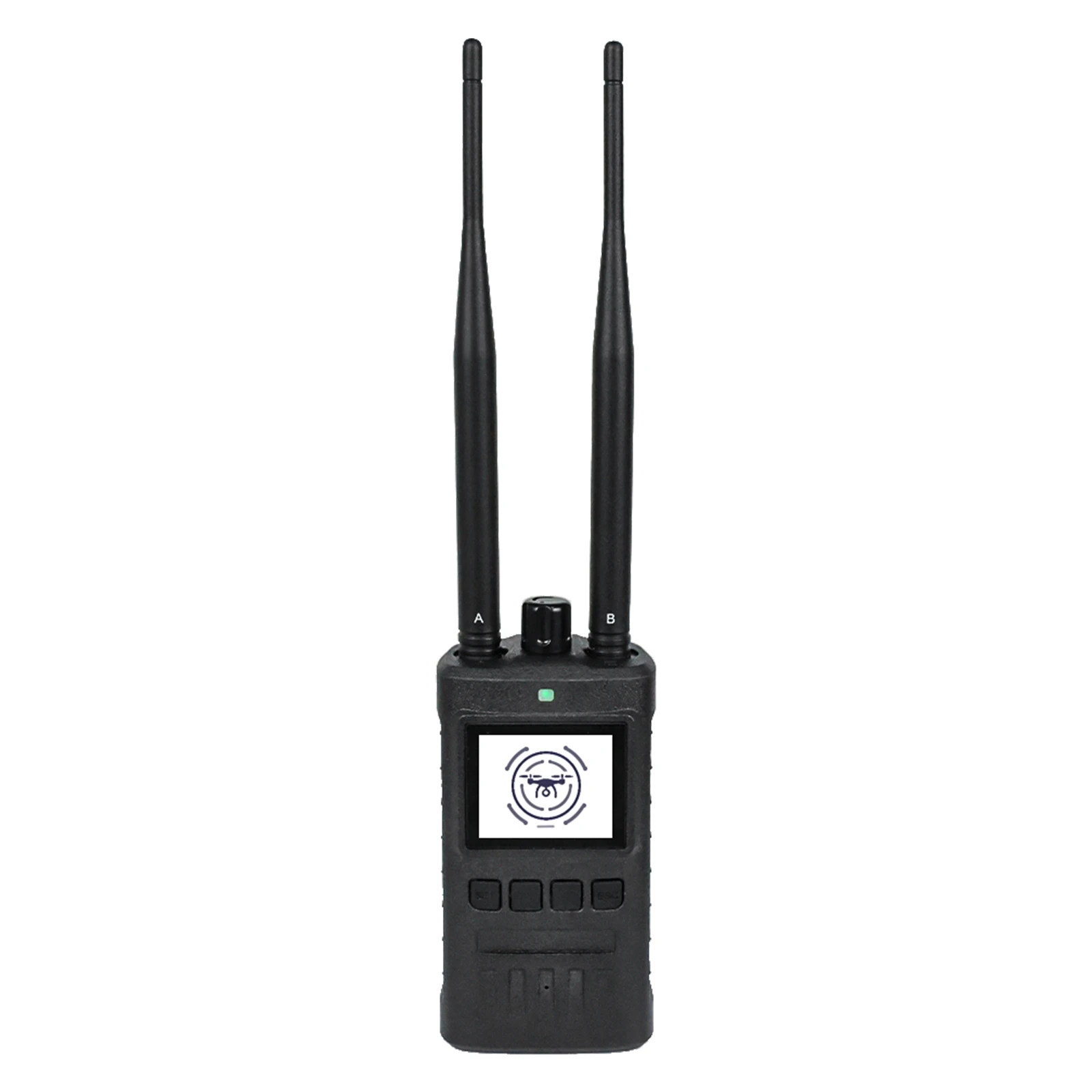
Trustworthiness, Support, and FAQ
Our commitment to clients extends beyond product delivery, encompassing comprehensive support, transparent processes, and unwavering reliability.
Frequently Asked Questions (FAQ):
-
Q: What is the maximum effective detection range of the handheld drone detector?
A: The effective detection range is up to 1.5 kilometers in clear line-of-sight conditions. This range can vary based on environmental factors, drone signal strength, and local RF interference.
-
Q: Can this detector identify specific drone models or brands?
A: Yes, through advanced protocol analysis, the detector can often identify common drone control protocols (e.g., DJI Lightbridge, OcuSync, Wi-Fi), which can indicate the potential drone manufacturer or type. This allows for better threat assessment.
-
Q: How does the system minimize false positives from other RF devices?
A: Our advanced algorithms are specifically trained on drone communication signatures. They analyze signal characteristics, modulation types, and protocol headers to differentiate actual drone signals from background RF noise, greatly reducing false alarms.
-
Q: What is the typical lead time for an order?
A: Standard orders typically have a lead time of 4-6 weeks from order confirmation to dispatch. Customized solutions or larger deployments may require additional time, which will be specified in the proposal.
-
Q: Is training provided for operating the handheld drone detector?
A: Yes, we offer comprehensive training programs, both virtual and on-site, tailored to the client's operational needs. Our goal is to ensure all operators are fully proficient in deploying and utilizing the device effectively.
Lead Time & Fulfillment Details:
We maintain a streamlined supply chain and manufacturing process to ensure timely delivery. For standard product configurations, the typical lead time is 4-6 weeks. Expedited options may be available upon request. All products undergo final quality checks and are securely packaged for global shipment, ensuring they arrive in optimal condition. Our logistics team coordinates closely with clients for efficient customs clearance and delivery.
Warranty Commitments:
Each handheld drone detector comes with a standard 2-year manufacturer warranty covering defects in materials and workmanship from the date of purchase. We also offer extended warranty programs and comprehensive service contracts to provide long-term peace of mind and minimize operational downtime. All warranty claims are handled promptly by our dedicated support team.
Customer Support Information:
Our commitment to client success is reflected in our robust after-sales support system. Clients benefit from:
- 24/7 Technical Support: Access to our expert technical team via a dedicated hotline and email for immediate assistance.
- Dedicated Account Management: Each B2B client is assigned an account manager for personalized service, ensuring all needs from initial inquiry to ongoing operational support are met.
- Firmware Updates and Maintenance: Regular firmware updates are provided to adapt to new drone threats and enhance existing capabilities. We offer various maintenance plans, including annual calibration and preventative servicing.
- On-site Support and Consultation: For complex deployments or specific operational challenges, our engineers are available for on-site consultation, installation support, and advanced troubleshooting.
We pride ourselves on building long-term partnerships, ensuring our clients are always equipped with the most reliable and advanced counter-UAS solutions available.
Conclusion
The evolving landscape of aerial threats necessitates advanced, adaptable, and highly reliable counter-UAS solutions. The handheld drone detector stands as a testament to innovation in this critical security domain, offering an optimal blend of portability, broad-spectrum detection, and real-time threat intelligence. Its ability to detect both analog and digital transmissions across a wide frequency range (440MHz~6.19GHz) makes it an indispensable tool for securing sensitive environments, protecting public safety, and maintaining operational integrity against the growing challenge of unauthorized drone activity. As threats continue to evolve, so too will our commitment to providing cutting-edge solutions that empower security professionals to maintain control of their airspace.
References:
- Federal Aviation Administration (FAA). "UAS Sightings Report: Data Analysis & Trends." (Annual Reports, available on FAA.gov)
- MarketsandMarkets. "Counter-UAV Market by System, Platform, End User and Region - Global Forecast to 2028."
- Department of Homeland Security (DHS) Science and Technology Directorate. "Counter-Unmanned Aircraft Systems (C-UAS) Technologies."
- Journal of Unmanned Vehicle Systems. "Recent Advances in RF-Based Drone Detection Technologies." (Various issues, academic publishers)
- International Organization for Standardization (ISO). "ISO 9001: Quality management systems – Requirements."
-
09 March 2021 24 Nov 2025
-
09 March 2021 24 Nov 2025
-
09 March 2021 23 Nov 2025
-
09 March 2021 23 Nov 2025
-
09 March 2021 22 Nov 2025
-
09 March 2021 21 May 2025
-
09 March 2021 25 Dec 2024
-
09 March 2021 14 Oct 2022
-
09 March 2021 25 Dec 2024



